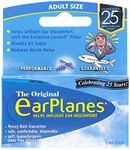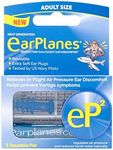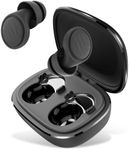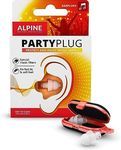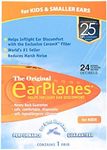Buying Guide for the Best Airplane Ear Plugs
Choosing the right airplane ear plugs can make a significant difference in your comfort during flights. Airplane ear plugs are designed to reduce the discomfort caused by changes in air pressure during takeoff and landing, as well as to minimize the noise from the aircraft and other passengers. When selecting the best ear plugs for your needs, consider factors such as noise reduction, comfort, material, and reusability. Understanding these key specifications will help you make an informed decision and ensure a more pleasant flying experience.Noise Reduction Rating (NRR)The Noise Reduction Rating (NRR) measures how effectively the ear plugs can reduce noise. This is important because it determines how much of the ambient noise will be blocked out, contributing to a quieter and more comfortable flight. NRR values typically range from 20 to 33 decibels. For light noise reduction, an NRR of 20-25 dB is sufficient. For moderate noise reduction, look for an NRR of 25-30 dB. For maximum noise reduction, choose ear plugs with an NRR of 30-33 dB. Consider your sensitivity to noise and the typical noise level on your flights when selecting the appropriate NRR.
ComfortComfort is crucial when wearing ear plugs for extended periods, such as during a long flight. Comfortable ear plugs should fit well without causing pain or irritation. They come in various shapes and sizes, so it's important to find a pair that suits your ear canal. Some ear plugs are made from soft foam, which expands to fit your ear, while others are made from silicone or rubber, which can be more durable and reusable. If you have sensitive ears or plan to wear the ear plugs for long durations, prioritize comfort and choose a material that feels good in your ears.
MaterialThe material of the ear plugs affects both comfort and durability. Foam ear plugs are soft and expand to fit the ear canal, providing a snug fit and good noise reduction. Silicone ear plugs are more durable and can be reused multiple times, making them a cost-effective option. Wax ear plugs mold to the shape of your ear and provide a custom fit, but they may not be as durable as silicone. Consider your personal preferences and any allergies you may have when choosing the material. If you prefer a softer, disposable option, foam might be best. For a reusable and durable choice, silicone is ideal.
ReusabilityReusability refers to how many times you can use the ear plugs before they need to be replaced. Disposable ear plugs are typically made from foam and are designed for single use, making them convenient for occasional travelers. Reusable ear plugs, often made from silicone or rubber, can be cleaned and used multiple times, which is more environmentally friendly and cost-effective for frequent flyers. If you travel often, investing in a good pair of reusable ear plugs can save you money in the long run. Consider how often you fly and whether you prefer the convenience of disposable ear plugs or the sustainability of reusable ones.
Pressure RegulationPressure regulation is a key feature of airplane ear plugs, designed to help equalize the pressure in your ears during takeoff and landing. This can prevent the discomfort and pain associated with rapid changes in air pressure. Some ear plugs have special filters or valves that gradually adjust the pressure, providing a more comfortable experience. If you frequently experience ear pain or discomfort during flights, look for ear plugs specifically designed for pressure regulation. These can make a significant difference in your overall comfort and help you avoid the unpleasant 'popping' sensation in your ears.




